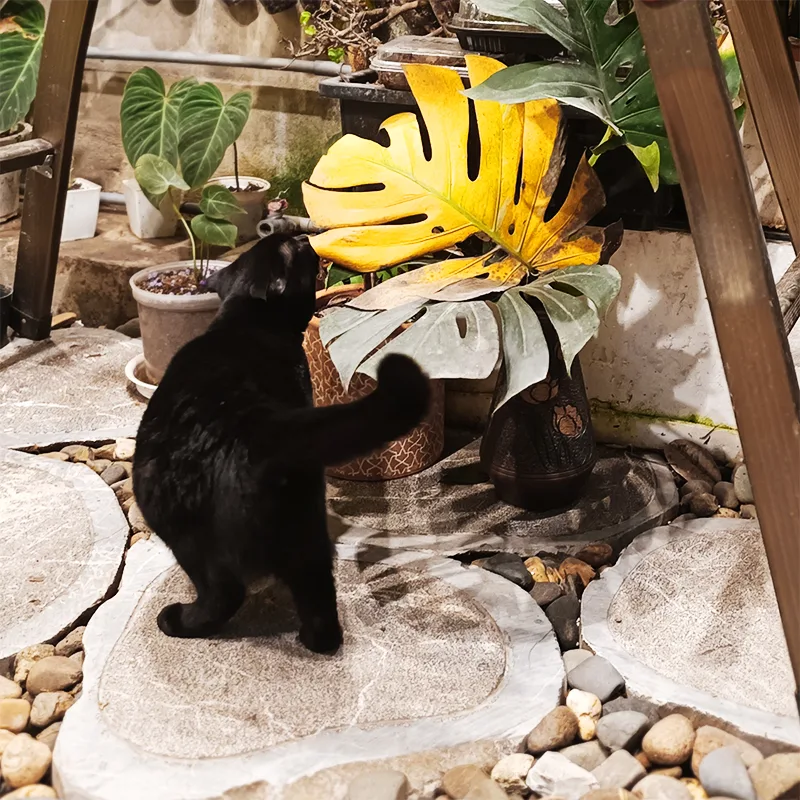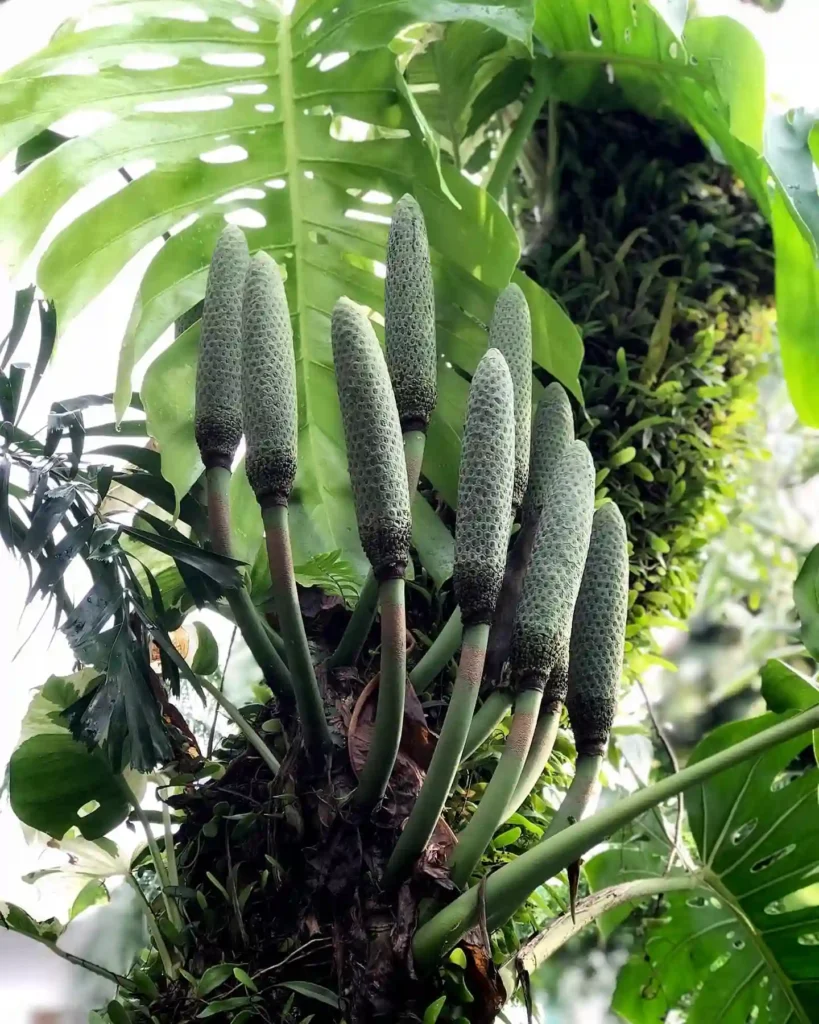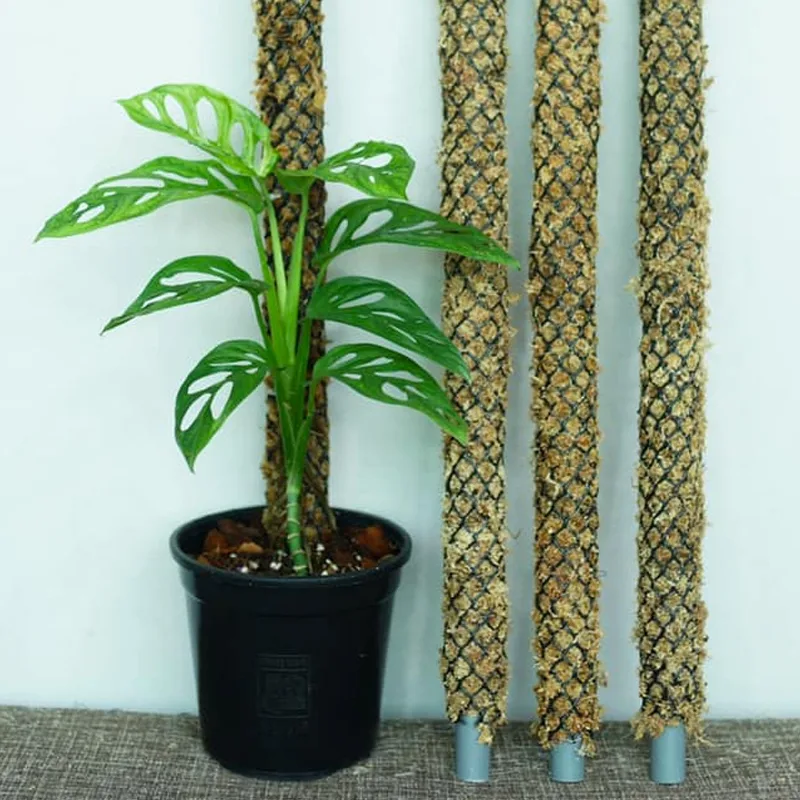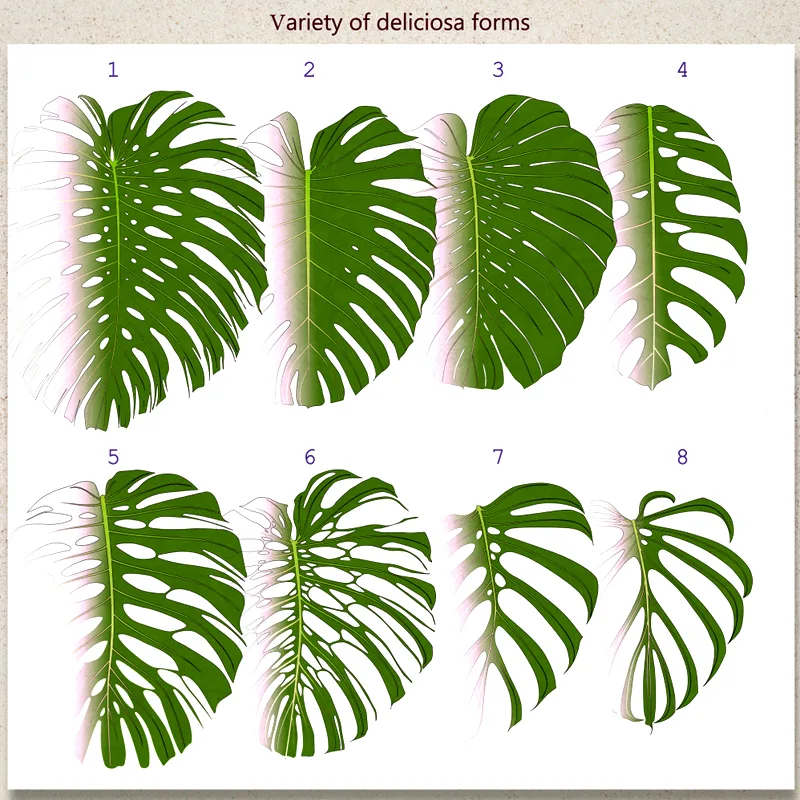The Variegated Monstera, scientifically known as Monstera deliciosa ‘Variegata,’ is a stunning and sought-after plant that has gained immense popularity among plant enthusiasts. With its unique variegated foliage featuring splashes of white or cream, this plant has become a statement piece in many homes and gardens. In this comprehensive guide, we will explore everything you need to know about caring for and growing Variegated Monstera plants.
1. Overview of Variegated Monstera
a. Description and Features:
- Variegated Monstera plants have large, glossy, heart-shaped leaves with irregular variegation patterns.
- The variegation can range from splashes or streaks of white or cream on green leaves to predominantly white leaves with green patches.
- The amount and intensity of variegation can vary from plant to plant.
- The plants can grow to be quite large, with mature leaves reaching sizes of 2 feet or more.
67 Species in Genus Monstera
b. Popular Varieties:
- Monstera ‘Thai Constellation’: This variety displays creamy yellow variegation and is highly sought-after.
- Monstera ‘Albo Variegata’: It features bold white variegation against dark green leaves.
- Monstera ‘Borsigiana Albo Variegata’: This variety has narrower leaves with variegation ranging from white to light yellow.
- Monstera Aurea Variegated: known for its striking golden-yellow variegation on its large, heart-shaped leaves.
- Monstera Mint Variegated: is a unique plant variety distinguished by its rare and delicate mint-green variegation, adding a refreshing touch to its lush, tropical foliage.
- Monstera White Monster: is an extraordinary plant variety characterized by its large, fenestrated leaves that display a stunning white variegation, creating a mesmerizing and ethereal appearance.
- Monstera Adansonii Variegated: striking white, yellow or mint variegation on leaves.
- …(Updating)
c. Rarity and Pricing:
- Variegated Monstera plants are considered rare and can be quite expensive due to their unique and desirable appearance.
- The pricing varies depending on factors such as the intensity of variegation, size, and overall health of the plant.
2. Plant Care:
a. Light Requirements:
- Variegated Monstera plants thrive in bright, indirect light. Avoid direct sunlight as it can scorch the leaves.
- Place them near a window with filtered or diffused light, or use artificial grow lights for indoor cultivation.
b. Temperature and Humidity:
- Variegated Monstera plants prefer temperatures between 65°F to 85°F (18°C to 29°C).
- They appreciate higher humidity levels, around 60% to 70%. Mist the leaves regularly or use a humidifier to maintain humidity.
c. Watering:
- Water the plant when the top inch of soil feels slightly dry. Avoid overwatering, as it can lead to root rot.
- Ensure proper drainage in the pot to prevent waterlogging.
d. Soil Requirements:
- Use a well-draining potting mix that retains moisture without becoming soggy.
- A mix of peat moss, perlite, and orchid bark is commonly recommended.
e. Fertilizing:
- Feed the Variegated Monstera with a balanced, water-soluble fertilizer once a month during the growing season (spring and summer).
- Dilute the fertilizer to half the recommended strength to prevent burning the roots.
f. Pruning and Propagation:
- Prune the plant to maintain its shape and remove any yellow or damaged leaves.
- Propagation is possible through stem cuttings or air layering. Ensure the cuttings have at least one node and place them in water or moist soil until roots develop.
2. Common Issues and Troubleshooting
a. Yellowing Leaves:
- Yellowing leaves can indicate overwatering, underwatering, or nutrient deficiencies.
- Adjust the watering frequency and ensure the plant is receiving adequate light and nutrients.
b. Root Rot:
- Overwatering and poor drainage can lead to root rot.
- If root rot is suspected, remove the affected roots, replant in fresh soil, and adjust the watering routine.
c. Pests and Diseases:
- Common pests include spider mites, mealybugs, and aphids. Treat infestations with appropriate insecticides or use natural remedies such as neem oil.
- Diseases like fungal leaf spots can occur due to high humidity or overwatering. Improve airflow and reduce watering if necessary.
3. Display and Aesthetic Tips:
a. Choosing the Right Pot:
- Select a well-draining pot with sufficient drainage holes to prevent waterlogging.
- Choose a pot that complements the plant’s aesthetics and allows for future growth.
b. Indoor vs. Outdoor Placement:
- Variegated Monstera plants can be grown indoors or outdoors, depending on climate conditions.
- Indoor plants require adequate light and humidity, while outdoor plants need protection from direct sunlight and extreme weather.
c. Supporting and Training:
- As the plant grows, provide support like a moss pole or trellis for it to climb and display its distinctive leaves.
- Secure the stems to the support using soft ties or plant clips to avoid damaging the foliage.
d. Enhancing Variegation:
- Adequate light exposure is crucial for maintaining and enhancing the variegation of the leaves.
- Avoid excessively low-light conditions, as it may cause the plant to produce more green foliage and reduce variegation.
4. Frequently Asked Questions (FAQs):
a. How fast does a Variegated Monstera grow?
The growth rate can vary depending on various factors, but on average, a Variegated Monstera can produce 1 to 2 new leaves per month.
b. Can I propagate a Variegated Monstera from a regular Monstera?
Yes, it is possible to propagate a Variegated Monstera from a regular Monstera through stem cuttings or air layering. However, the resulting plants may not retain the variegation.
c. Why are Variegated Monstera plants expensive?
Variegated Monstera plants are rare and challenging to propagate, making them highly sought-after among collectors, which drives up their price.
d. Can I convert a regular Monstera into a Variegated Monstera?
No, it is not possible to convert a regular Monstera into a Variegated Monstera. Variegation occurs due to genetic mutations, and it cannot be induced or altered in an existing plant.
Conclusion: Variegated Monstera plants are captivating additions to any plant collection, with their stunning variegated foliage. By following the care guidelines outlined in this guide, you can provide optimal conditions for your Variegated Monstera to thrive and showcase its unique beauty. Remember to be patient and enjoy the journey of caring for this rare and remarkable plant.
If i die, water my plants!



